نقد و بررسی
ولوم 20 کیلو اهم- قطر شفت:6 میلی متر
- طول شفت:10 میلی متر
- طول رزوه شفت:6.5 میلی متر
- سوراخ دور شفت:7.5 میلی متر
- قطر بدنه:16.3 میلی متر
- ارتفاع پشت بدنه تا نوک شفت:28 میلی متر
ولوم 20 کیلو اهم
از مقاومت ها برای کنترل جریان و کاهش ولتاژ استفاده می شود.مقاومت ها به دو دسته کلی ثابت و متغیر دسته بندی می شوند که مقاومت های ثابت مقدار آن ها ثابت بوده و مقدار آن ها با درصد کمی خطا مشخص می شود.
اما مقاومت های متغیر را می توان بسته به نیاز ،اهم آن ها را کم و یا زیاد کرد ، هنگام خرید مقاومت متغیر باید نوع و مقدار حداکثر آن را به فروشنده اعلام کرد تا فروشنده مقاومتی بسته به نیاز شما در اختیار شما قرار دهد.
ماژول ولوم کشویی 10 کیلو اهم 6 پایه(در تب جدید مرورگر باز می شود )
مرسوم ترین مقاومت متغیر،ولوم یا پتانسیومتر خطی می باشد،در این ولوم ها چون به راحتی می توان با چرخش شفت مقدار آن ها را کم یا زیاد کرد استفاده بسیاری پیدا کرده اند.
ولوم ها دارای سه پایه می باشند که دو پایه کناری ، ابتدا و انتهای صفحه ی ثابت مقاومت بوده که مقدار آن از صفر تا مقدار درج شده بر روی ولوم می باشد و پایه ی وسط که به اصطلاح پایه لغزان آن بوده مقدار خروجی را با چرخش شفت تغییر می دهد.مثلا در ولوم 10 کیلو اهم رنج تغیر از 0 تا 10 کیلو اهم بوده و با پایه ابتدایی و وسطی می توان به این مقدار دست یافت.
از ولوم ها می توان برای تقسیم مقاومتی نیز استفاده کرد چون یک ولوم را در واقع می توان فرض کرد از دو مقاومت به صورت سری تشکیل شده است و پایه ی وسطی ولوم نیز سر وسط دو مقاومت سری شده می باشد.
رله 5 ولت میلون(در تب جدید مرورگر باز می شود )
مقدار درج شده در بالای ولوم مقدار اهم ولوم بوده که از یک عدد به همراه یک حرف که بیانگر واحد آن می باشد مانند K که بیانگر کیلو اهم و یا M که بیانگر مگا اهم می باشد تشکیل شده است.
به همراه ولوم ها یک مهره و یک واشر ارسال می شود که برای بستن ولوم بر روی بدنه دستگاه ها و ادوات و همچنین محکم نگه داشتن ولوم از شکستن پایه ها استفاده می شود.
ابعاد کلی ولوم 20 کیلو اهم عبارت است از:
- قطر شفت:6 میلی متر
- طول شفت:10 میلی متر
- طول رزوه شفت:6.5 میلی متر
- سوراخ دور شفت:7.5 میلی متر
- قطر بدنه:16.3 میلی متر
- ارتفاع پشت بدنه تا نوک شفت:28 میلی متر
- ارتفاع نوک پایه ها تا نوک ولوم:25 میلی متر
- فاصله ی پایه ها:2.45 میلی متر
راهنمای تیغه های ولوم 20 کیلو اهم:
Potentiometer Functions and Potentiometer Types. Potentiometer or often called a potentiometer is a resistor whose resistance value can be changed or adjusted according to the needs of the electronic circuit or the wishes of the wearer. Potentio is a resistor family and is included in the variable resistor group. The potentiometer consists of three terminals, namely one sliding terminal that functions as a wiper or wiper and two fixed terminals at both ends.
Potentiometer is also known as potmeter or pot. In general, a potentiometer consists of a resistive element in a circular shape and a wiper in the middle. Potentiometer resistive elements are usually made of materials such as carbon, metal ceramics, plastic, resistance wire and metal film.
POTENTIOMETER FUNCTION:
Basically, the potentiometer functions as a variable voltage divider for which the applications of potentiometer use are numerous and easy to find.
In electronic equipment, potentiometers are often used as volume control in audio or video equipment such as audio mixers, equalizers, oscilloscopes, amplifiers, radios, Handy Talkies or Walkie Talkies, car tapes and others. Potentiometers are also often used in light dimmer circuit and voltage or current control in the power supply (DC generator).
With the ability to change the value of resistance or resistance, potentiometers are often used in electronic equipment or circuits with the following functions:
1. As a volume control for various audio or video equipment such as amplifiers, equalizers, oscilloscopes, car tapes, and DVD players.
2. As a voltage and current regulator in the power supply circuit
3. As a voltage divider
4. Used in a TRIAC switch circuit
5. As a signal level controller
6. Used as a joystick on a transducer
POTENTIOMETER TYPES:
In general, there are several types of potentiometers that are often found, including the type of rotary potentiometer, digital potentiometer, rheostat and slider potentiometer. The following is an explanation of the types of potentiometers:
1. MANUAL POTENTIOMETER:
Manual potentiometer can be divided into 2 types, namely potentiometer with a rotating motion (rotary potentiometer) and potentiometer with a sliding motion (potentiometer slider).
ROTARY POTENTIOMETER
Rotary potentiometer or rotary potentiometer is the most common type of potentiometer and is often used in electronic equipment. The rotary potentiometer resistance value can be adjusted by turning the wiper along the track or a circular track. Usually the wiper on a rotary potentiometer is equipped with a lever that can be rotated using a finger.
POTENTIOMETER SLIDER
Potentiometer Slider or slide potentiometer is a potentiometer whose resistance value can be adjusted by sliding the wiper from left to right or from bottom to top according to the installation. Usually use your thumb to slide the Wiper. A slider potentiometer is also known as a slide pot, fader or linear potentiometer.
2. DIGITAL POTENTIOMETER:
Digital potentiometer is an electronic component that is controlled electronically or digitally. Digital potentiometer is usually used to cut and measure analog signal by microcontroller. A digital potentiometer is generally controlled via digital I2C and SPI communications.
3. RHEOSTATS:
Rheostats are variable resistors that have two terminals and are often designed to handle high currents and voltages. A potentiometer can also be used as a rheostat, or single variable resistance. The best way to use a potentiometer as a rheostat is to connect the Wiper terminal with the end of one terminal fixed together. This is done to prevent the Wiper from breaking or losing contact due to the influence of dirt or the like.

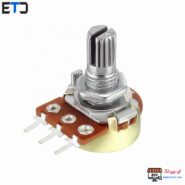

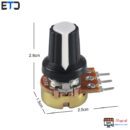
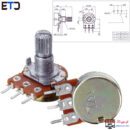
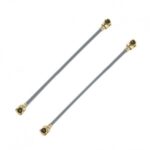
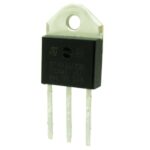
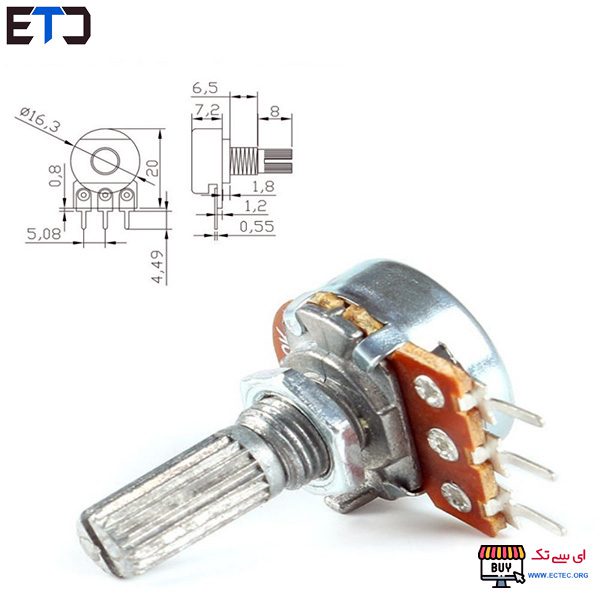
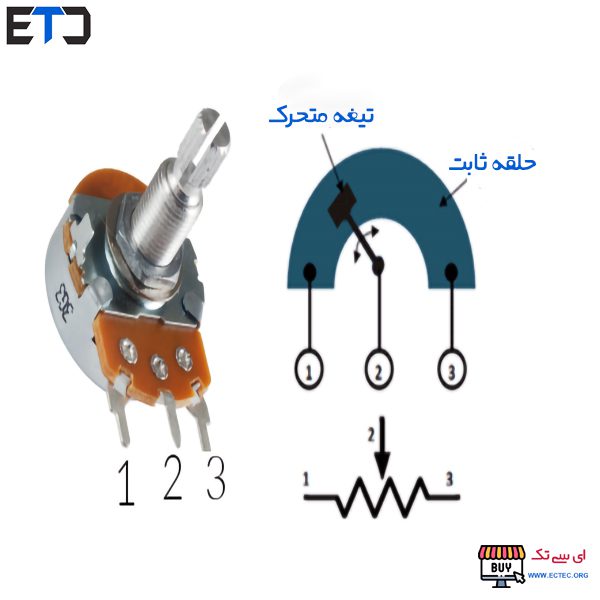
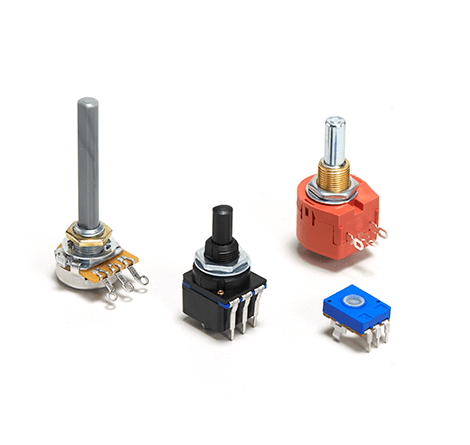






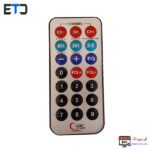




0دیدگاه